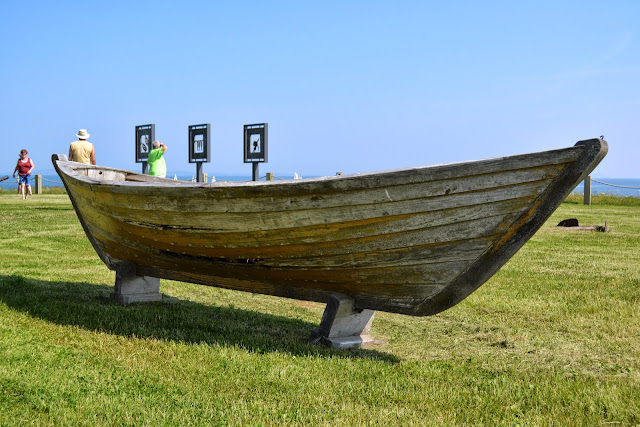In 1534 Jacques Cartier was the first European to visit the islands. It is believed the first islands he set foot on were Rocher-aux-Oiseaux (Bird Rock) and Brion Island.
In 1755, the islands became inhabited by French speaking Acadians. This was due to the “Grand Derangement” (the exile) of Acadian people from the Maritime Provinces. Today many Madelinots fly the Acadian flag as they think of themselves as both Acadians and Quebecois.
After the French Revolution in 1789 other families came to
the islands led by father Jean-Baptite Allain, whom created the first records
of colonization for the Magdalens.
The Magdalen Islands have seen its fair share of tragedy with
more than 400 shipwrecks recorded. Today 6 lighthouses still project their
life-saving beams to help guide the vessels.
With so much history and beauty I found myself asking the
question how do I show the islands off in a fashion that I don’t repeat myself?
Well I decided to showcase each island separately. Each has its own uniqueness
and similarities.
 |
| Plage du Cap |
Further down the road is Anse Shea and La Grave with their steep cliffs.
 |
| Anse Shea |
 |
| Overlooking the village of La Grave |
 |
| One of many craft shops in La Grave |
 |
|
More unique craft
shops in La Grave |
 |
| Lobster boats at the La Grave Dock |
 |
| Lunch at Vent du large-Bleu Mer in La Grave |
 |
| Eating lunch we are sooooo happy the food was fabulous |
 |
| Seal
|
 |
| Our main course of
fish and chips
|
 |
| Friendly Nova Scotians |
 |
|
Our happy waitress
Pierette
|
High on the hill
overlooking La Grave is the Musee de la Mer (Museum of the Sea)with exhibits
depicting the Islands history. The puncheon boat is one such item. Until the 20th
century, the islands were completely isolated during the winter. The ice made
the trip to the mainland impassable by boat consequently communicate with the
mainland was impossible. In the winter of 1910, an urgent request for help was
sent to the mainland inside a molasses barrel (or puncheon), which they set
adrift. Upon reaching Cape Breton Island, the government sent out an icebreaker
to bring aid. Within a few years, the Magdalens were given one of the new
wireless telegraph stations. The puncheon is now famous, and every tourist shop
sells replicas.
 |
|
Cannon found in the
entrance to the Havre-Albert Marina dating back to Louis XVI
|
 |
| A house getting closer to the sea |
The Magdalen Islands
have seen its fair share of tragedy with more than 400 shipwrecks recorded.
Today 6 lighthouses still project their life-saving beams to help guide the
vessels.
 |
| Anse a la Cabane Lighthouse |
 |
| The lighthouse
protects from these cliffs |
 |
| The sand dunes of Plage de l’Quest |
 |
| The red cliffs near Plage de l’Quest |
 |
| The long sandy beaches |
 |
|
Enjoying a day at the beach
|
 |
| Thick forests and a roadside filled with summer flowers |




No comments:
Post a Comment